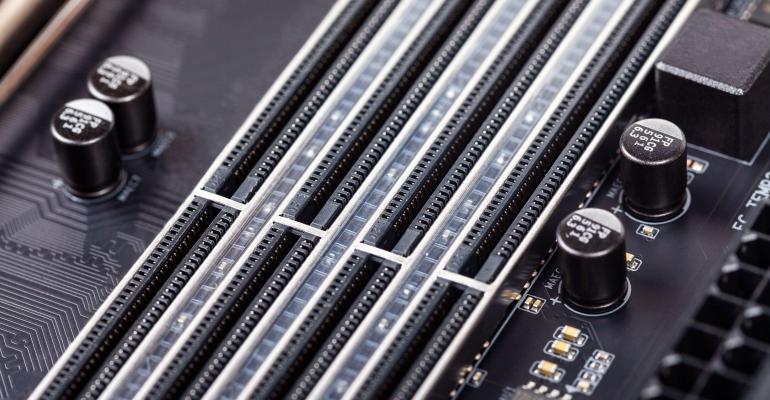As escalating data demands and mounting efficiency requirements continue to charge forward, the shift from DDR4 to DDR5 memory-based platforms is becoming a pressing consideration, and data centers find themselves at a crossroads.
At the baseline, transitioning from DDR4 to DDR5 systems requires an entirely new server system. So, when deciding if and when to make the upgrade, IT leaders must weigh hardware implementation costs against the real-world benefits the next-gen server architecture and DDR5 will bring, especially when considering the type of tasks a given data center specializes in.
So, what exactly sets DDR5 and DDR4 apart? Improvements across the board, from performance to efficiency, all contribute to enhancing day-to-day data center operations.
Bandwidth Boost
The primary allure of DDR5 is its boosted speed and bandwidth, enabling swifter data processing – a vital component in sectors like finance and logistics where real-time analytics are indispensable. DDR5 has higher clock speeds of 4800 and 5600MT/s, compared with DDR4's range of 2133 to 3200MT/s, which provides superior performance for memory-bound applications.
These speeds translate to significant jumps in memory bandwidth for the processor, with 5600MT/s providing up to 44.8GB/s per module. Installed in a multi-channel 8 or 12-channel memory architecture, DDR5 becomes one of the fastest and most critical performance metrics in the server system.
These advancements translate to enhanced productivity and processing times, especially with memory bandwidth critical applications like artificial intelligence (AI), data sciences, big data analytics, and high
Efficiency
Operational costs are always top of mind in the world of data centers, especially in facilities operating round-the-clock. Even while delivering boosted performance, DDR5 operates at a lower standard voltage and is built on the latest semiconductor nodes – providing roughly 30% greater power efficiency than DDR4.
DDR5 memory modules are also split into two independent 32-bit addressable subchannels to further increase efficiency and provide lower latencies between the memory subsystem and processor cores.
Data centers can now do more with less, resulting in a tangible reduction in operational expenses and the flexibility to free up more energy for other components of the system to use.
Data Integrity
Enhancements made to the DDR5 specification make for a more stable compute environment over DDR4. Each DDR5 DRAM component features On-Die Error Correction Code (ODECC), which is capable of catching and correcting single-bit errors within the chip. This complements the module-level ECC support, which has been a part of server-class memory for decades.
As technology scales smaller and smaller to increase compute power and lower energy consumption, it becomes more vulnerable to errors in data storage and transfer. These errors are as small as a flipped one or zero in computing code but can cause faults, corrupted data, or even frozen systems.
Mitigating these types of errors has been a critical milestone for the modern data center, particularly those where poor data integrity can cost millions in lost time and revenue.
Return on Investment
As with any change, the financial implications of shifting to DDR5 will manifest over time. Initial expenses will encompass new server platforms, installation costs, and potential small amounts of downtime during the transition. However, it's vital to balance these against the improved performance promised by a newly DDR5-powered system, outpacing the former DDR4 capabilities year after year.
Each data center is slightly different, but a careful review of projected ROI can reveal performance gains that offset upfront costs in specific applications and scales. Investing now can also be an advanced step toward future-proofing data center infrastructure ahead of the next wave of hardware-intensive applications.
Although DDR5 is a significant improvement over DDR4 regarding performance, data integrity, and efficiency specs, the decision to invest in the upgrade is not one-size-fits-all. For some data centers, upgrading DDR4 systems might be the best course at the moment, especially if the costs for new platforms outweigh the current business.
However, for those data center operators already pushing the limits of their current hardware – or those looking to invest in new, high-bandwidth dependent applications like AI – changing to a DDR5 platform can be pivotal.
By transitioning now, data centers not only streamline their present operations but also become more prepared for the growing demands of computing in the near future.
Mike Mohney is senior technology manager at Kingston Technology.





